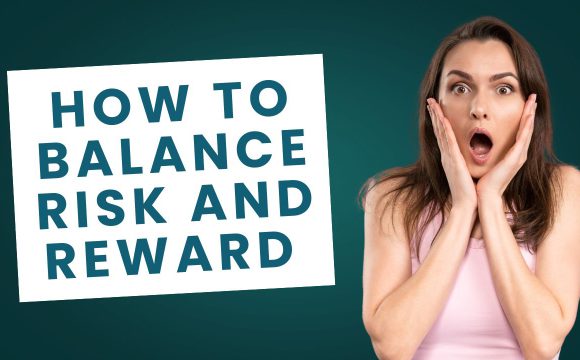Introduction: Building Your Wealth—One Dollar at a Time
Investing isn’t just for the Wall Street whizzes or the mysterious millionaires with suits that could buy small islands. It’s for everyone, and yes, that includes you—a dedicated, ambitious beginner ready to conquer the financial world! The truth is, building wealth through investing is more than a trend; it’s a ticket to securing a comfortable future. So, let’s dig into why investing is essential and why starting your journey today could be a game-changer for your financial future.
Understanding the Basics of Investment
What is Investing Anyway?
At its core, investing is the process of putting your money to work to earn more money. It can involve purchasing assets such as stocks, bonds, real estate, or even owning a small part of a company. If you think of yourself as a money gardener, then investment is like planting seeds today for the fruitful tree you’ll enjoy tomorrow.
The Difference Between Saving and Investing: No, They’re Not the Same!
Many people wonder why they can’t just save their way to wealth. Sure, putting money aside is crucial, but saving is like being on a dieting plan without exercise. It’s good, but it won’t get you to optimal health (or wealth). Savings usually yield a meagre interest rate, while investments have the potential for considerably higher returns over time.
Compound Interest: The Eighth Wonder of the World
If you want to get excited about investing, let’s talk compounding! Imagine your money earning interest on top of interest—like a delicious money snowball. Albert Einstein is said to have called compound interest the eighth wonder of the world. It’s a powerful concept that allows your wealth to grow exponentially, especially when you start investing early.
Investment Strategies: Your Path to Prosperity
Start with Strong Foundations: Setting Financial Goals
Before you jump into the deep end, let’s build a strong pillar. Investment success starts with realistic financial goals. Ask yourself: what do I want to achieve? Whether it’s buying a house, saving for retirement, or taking that dream vacation, defining your intentions makes it easier to develop an effective investment plan.
Short-Term vs. Long-Term Goals
Understanding the difference is key. Short-term goals might mean saving up for a big purchase in the next few years, while long-term goals can span decades, like retirement. Each requires different investment strategies, so having clear separations is vital to crafting a successful plan.
Creating a Budget: Your Spending Blueprint
Think of a budget as your financial map that prevents you from getting lost in overspending. Drafting a budget helps ensure you can meet your day-to-day needs while still allocating a chunk of change for investments.
Diversification: Don’t Put All Your Eggs in One Basket (Seriously)
Ever heard of the saying “Don’t put all your eggs in one basket”? When it comes to investing, this is the golden rule. Diversification means spreading your investments across various asset classes. If one part takes a hit, others may still thrive, thus protecting your wealth.
What is Diversification?
Essentially, it’s a risk management strategy. You don’t want to lean solely on one stock; if it drops like a lead balloon, you’re left with a big ol’ goose egg. Instead, owning a mix of stocks, bonds, and other assets helps balance your risk and reward.
Dollar-Cost Averaging: The Slow and Steady Turtle Wins the Race
Dollar-cost averaging is an investment technique where you invest a fixed amount of money at regular intervals, regardless of the asset’s price. This method helps mitigate the impact of volatility, allowing you to buy more shares when prices are low and fewer when they are high.
How to Use This Strategy Effectively
To make this technique work, set aside a certain percentage of your income for investments each month, and stick to it, no matter the market conditions!
Index Funds: The Passive Way to Invest Like a Pro
Index funds are mutual funds designed to mirror the performance of a specific index, such as the S&P 500. They are the perfect passive investment strategy for beginners because they typically require less management.
Understanding How Index Funds Work
By investing in an index fund, you essentially buy a small piece of every company in the index. This is a cost-effective way to gain exposure to a broad market without needing to pick stocks like a seasoned professional.
Choosing the Right Index Funds for You
Look for funds with low expense ratios, as fees can eat into your profits over time. It’s important to align the risk of the index with your financial goals to create a suitable fit.
ETFs: Everything a Beginner Needs to Know
Exchange-Traded Funds (ETFs) have taken the investing world by storm, offering a blend of mutual fund ease and the trading flexibility of stocks. They hold a collection of different assets, just like index funds, but trade on an exchange like individual stocks.
The Connection Between ETFs and Index Funds
While both ETFs and index funds aim to replicate the performance of a market index, ETFs allow for buying and selling throughout the trading day, which can be an exciting option for those who love action (or just want to be able to check their balances mid-day).
The Benefits of Low Fees
A noteworthy perk of both index funds and ETFs is their relatively low expense ratios compared to actively managed funds. Since they follow a passive management strategy, you get to keep more of your returns, allowing your money to grow faster.
Real Estate: Not Just for Rich Folks
When you hear “real estate,” you might picture sprawling mansions or high-rise apartments in downtown. The good news? You don’t have to be wealthy to invest in property; there are accessible ways to get started!
REITs: Real Estate Investment Trusts Bypassing the Property Drama
Real Estate Investment Trusts (REITs) allow you to invest in real estate without the headaches of property management. You buy shares in a company that owns or finances income-producing real estate, making it a convenient way to diversify and earn income from real estate.
Understanding Different Types of Bonds
Bonds are essentially loans you’re giving to entities like governments or corporations. They pay you interest over time and return your principal at maturity. Think of them as your more stable, less risky investment companions. Government bonds tend to be safer, while corporate bonds can yield higher interests but come with more risk.
Why Bonds Should Not be Overlooked
While they may not seem as exciting as stocks, bonds often provide a safety net during market volatility. Including a healthy mix in your portfolio can help buffer against market dips, keeping your financial goals within reach.
Retirement Accounts: Your Future Self Will Thank You
Investing in a retirement account is like giving your future self a hot cup of cocoa on a chilly day—warm and comforting, knowing you’re set for the future.
Understanding 401(k) and IRA: The Dynamic Duo
401(k) plans are often employer-sponsored, allowing you to invest pre-tax money, which grows tax-deferred. If your employer offers a matching contribution, that’s free money! Individual Retirement Accounts (IRAs) provide similar tax advantages, although they come with different contribution limits.
Employer Match: Free Money? Yes, Please!
Not contributing enough to get your employer match is leaving money on the table. Aim to contribute at least enough to qualify for it, because that’s essentially your boss saying, “Here’s some extra cash for being awesome!”
Robo-Advisors: The Tech-Savvy Way to Invest
If traditional investing feels daunting, robo-advisors like Betterment or Wealthfront use algorithms to create and manage a diversified portfolio based on your financial situation and risk tolerance.
How They Work and Why They’re Great for Beginners
Most robo-advisors assess your goals through simple questionnaires and automatically re-balance your investments as needed. It’s like having a personal financial assistant without the hefty price tag, allowing beginners to invest confidently.
Investing in Yourself: Education is the Best Investment
While it might seem out of place, investing in personal development is crucial. Whether it means taking courses, attending workshops, or reading books, enhancing your skills and knowledge can yield significant returns over a lifetime. After all, the best asset you can have is a well-informed mind!
Common Mistakes to Avoid: Learning from Others’ Missteps
Chasing Hot Stocks: Like Chasing a Moving Target
The allure of hot stocks can be intoxicating, akin to running after a mirage in the desert. The truth is, most “sure bets” are fraught with risk, often leading to disappointment when trends cool off. Stick to your strategy and remember that slow and steady wins the race.
Overreacting to Market Fluctuations: Stay Calm and Carry On
The market is notorious for its roller-coaster rides. Remember, it’s perfectly normal! The key is to stay calm and avoid knee-jerk reactions. Focus on your long-term goals, and don’t let daily market shifts dictate your emotions—or your investments!
Ignoring Fees: The Silent Wealth Eroders
Investment fees might seem negligible at first, but they can quickly add up and chip away at your returns. Always keep an eye on what you’re being charged, as even a small difference in fees can lead to significant variance in your long-term gains.
The Role of Research and Analysis: Knowledge is Power
The Importance of Doing Your Homework
Before diving into an investment, take the time to research. Understanding what you’re investing in is crucial—know the company, the market trends, and economic indicators. Knowledge isn’t just power; it’s your shield against potential losses.
Trusted Resources for Beginners
There’s a wealth of information out there. Websites like Investopedia, MarketWatch, and personal finance blogs can offer valuable insights. Books and financial news also serve as great companions on your learning journey.
Building a Habit: Consistency Makes the Difference
Setting a Regular Investment Schedule
Treat your investments like a recurring bill; set it and forget it! By automating contributions to your investment account, you remove the temptation to time the market and create a disciplined investment habit.
Tracking Your Progress: Celebrate Small Wins!
Keep an eye on your portfolio’s performance, but focus more on long-term growth rather than short-term fluctuations. And seriously, don’t forget to celebrate your milestones. Whether it’s reaching your first $1,000 or making your first diversification move, take a moment to appreciate your progress!
Wrapping It Up: Your Journey to Financial Freedom Begins Today
Recap of Top Strategies
We’ve covered a lot! From setting financial goals and understanding diversification to leveraging index funds and seeking the right investment accounts. Each step you take builds toward your financial independence.
Start Small, Dream Big!
Don’t feel pressured to become a financial guru overnight. Start small, make informed decisions, and allow your wealth to grow over time. Remember, every journey begins with a single step!
Final Thoughts: Humor in Investment—It’s Okay to Laugh
The Roller Coaster of the Market: Hold On Tight!
The markets can be wild, so buckle up! Just as you wouldn’t walk into an amusement park without a ticket, don’t step into the investment world without a plan.
Remember, Even Experts Were Beginners Once
Every expert in the field started exactly where you are now—so keep going! With knowledge, persistence, and a touch of humor, you’re well on your way to becoming a savvy investor, building lasting wealth with a smile on your face.






